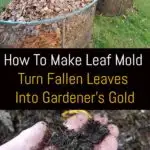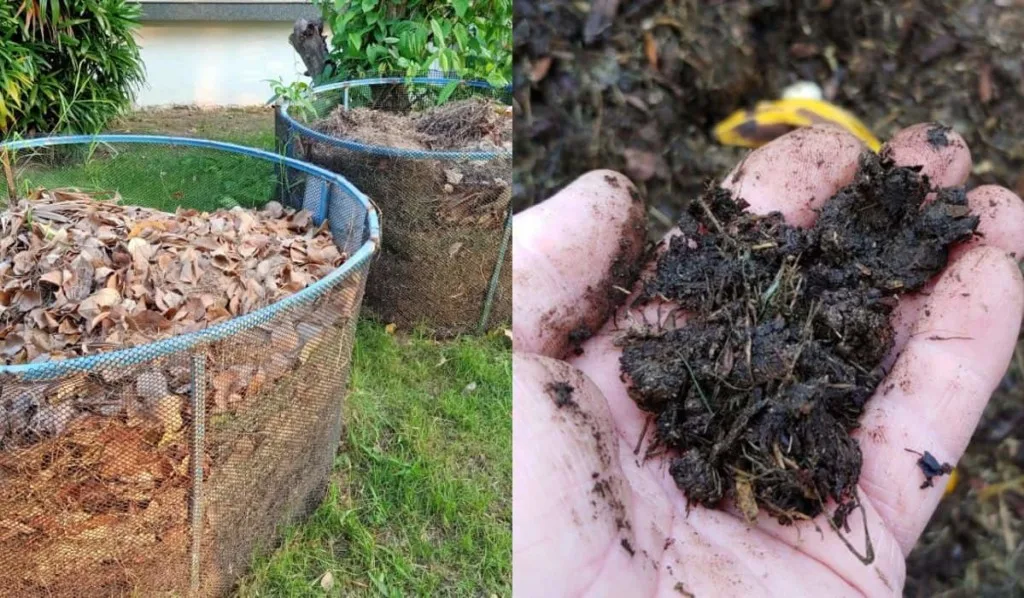
As fall proceeds and leaves begin to flurry down, you may be wondering what to do with all the wind blown foliage.
Many gardeners seem to view fallen leaves as a problem – something to be tidied up. But successful organic gardeners soon begin to see these dead leaves as a boon rather than as a bane to their existence.
On our property, we try to make the most of this abundant natural resource. In this article, we will discuss how to make leaf mold.
This is one great way to make the most of what nature has to offer.
Using Fallen Leaves in Your Garden
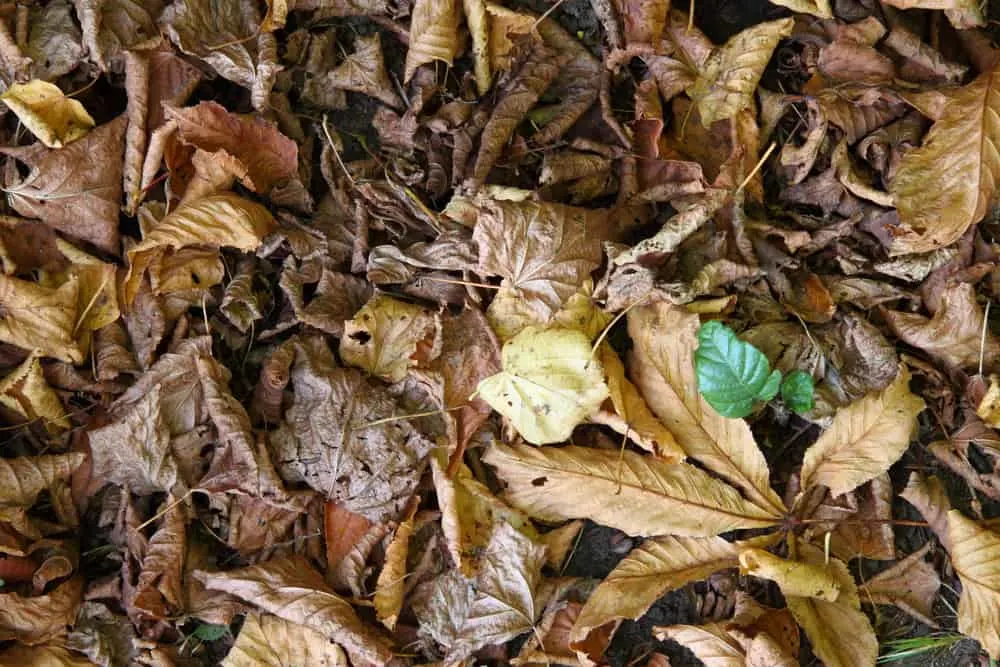
Before we begin, however, it is worthwhile thinking about all the different ways that fallen leaves can come in handy in the garden.
In addition to using them to make leaf mold, fallen leaves can also be:
- Left to lie where they fall, to add fertility to the soil below.
- Used as a mulch, as is, around mature trees and shrubs elsewhere in the garden.
- Added to a general compost heap or bin.
- Used as a component in raised ‘lasagna’ beds, a no dig garden or sheet mulch growing areas where they will compost in place.
- Used in a range of artistic or craft projects (by you, or your children).
- Preserved in beeswax for beautiful home decor.
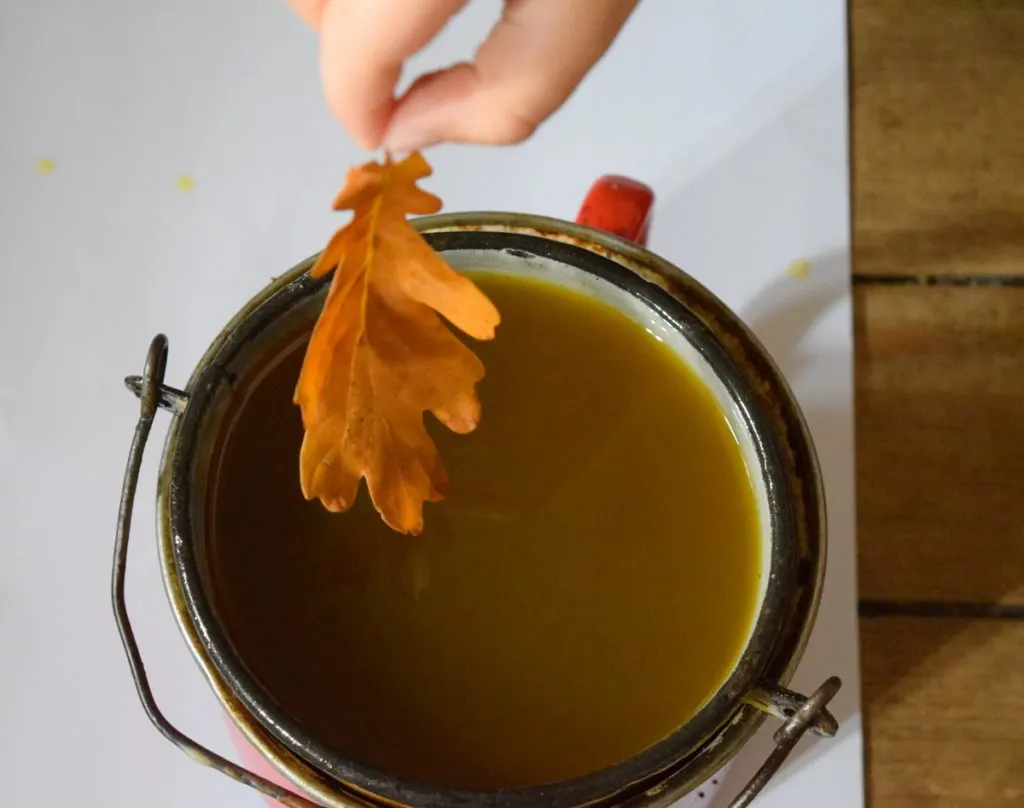
Should Gardeners Collect Up Fallen Leaves?
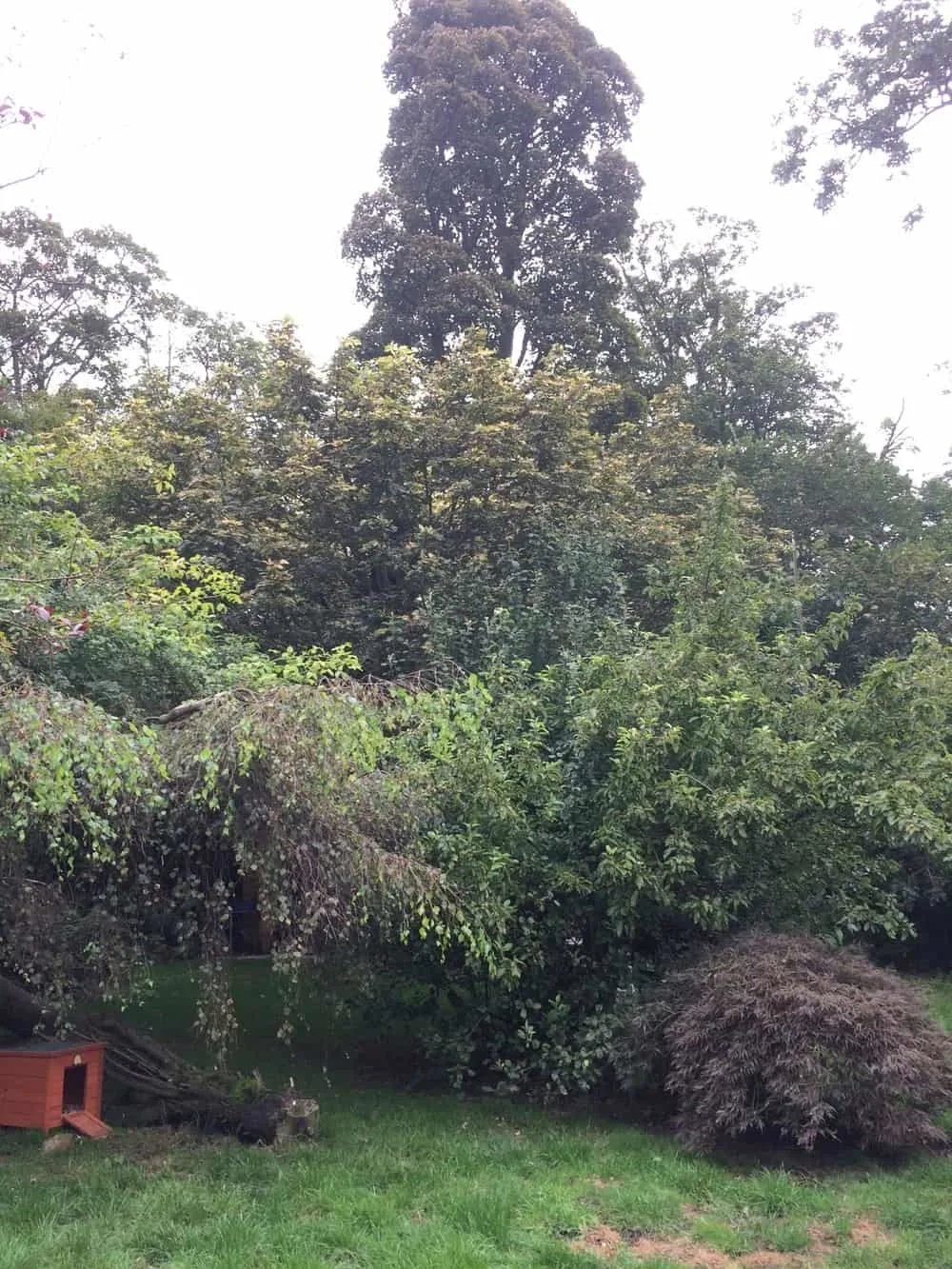
It is important to remember that in an organic garden, we should always try to understand and make use of nature’s cycles.
Leaves that fall from deciduous trees and shrubs will naturally lie on the soil surface below.
There, the varied creatures of the soil ecosystem will set to work, breaking them down and returning their nutrients to the topsoil, where they form a rich humus that will enrich the soil structure and feed the surrounding plants.
As they break down, the fallen leaves will also provide a valuable habitat for a range of invertebrates and other creatures.
It is important to understand that it is not always necessary (or a good idea) to rake and clear away all the leaves that fall in your garden.
Leaves should sometimes simply be left, to allow nature to take its course. Leaving some fallen leaves where they lie can often be beneficial not only for the soil and the plants, but also for local wildlife.
Reasons To Collect Up Fallen Leaves
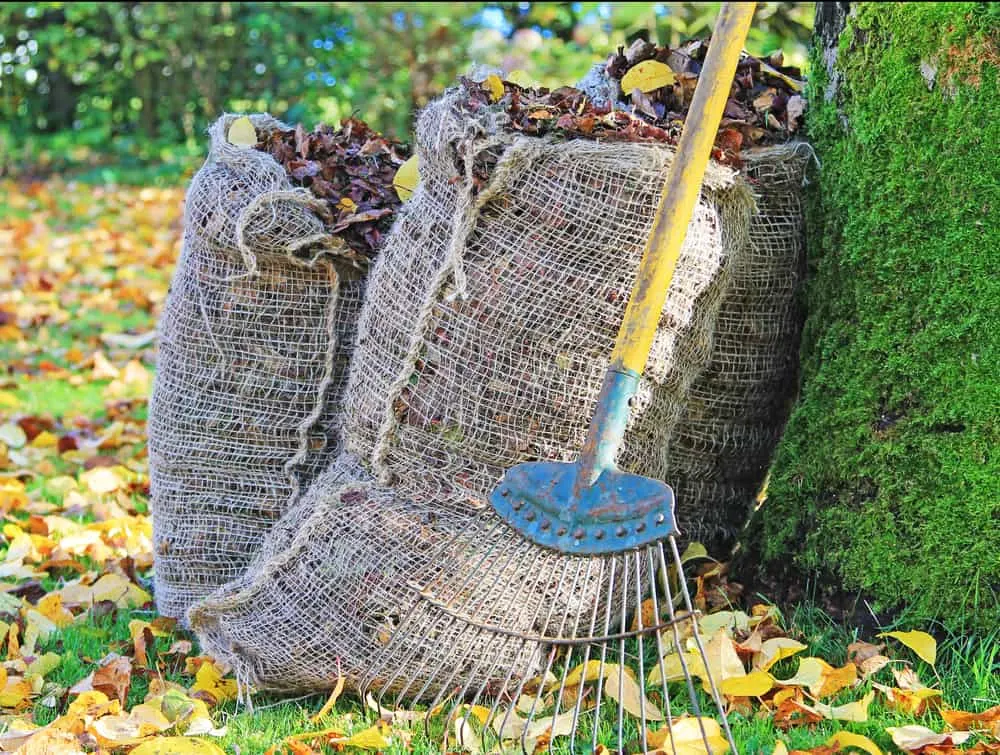
But there will be times when it is a good idea to collect up fallen leaves. For example:
- Too many leaves on a lawn area will exclude light, which can create bare patches or discolored areas.
- Leaves on a path, driveway or areas of paving can be slippery, and cause a hazard.
- Leaves that fall into or blow into a pond can cause it to silt up and become sludgy and full of rotten vegetation. Rotting vegetation can overload the nutrient balance of the pond. It can, therefore, be a good idea to remove excess leaf fall from the area before they blow into the water.
If you have a lot of leaves to collect up, making leaf mold can be a good idea.
We collect up leaves from our back garden – a relaxed and naturalistic lawned woodland area – while the leaves in the forest garden/ orchard are left to lie where they fall.
Why Make Leaf Mold?
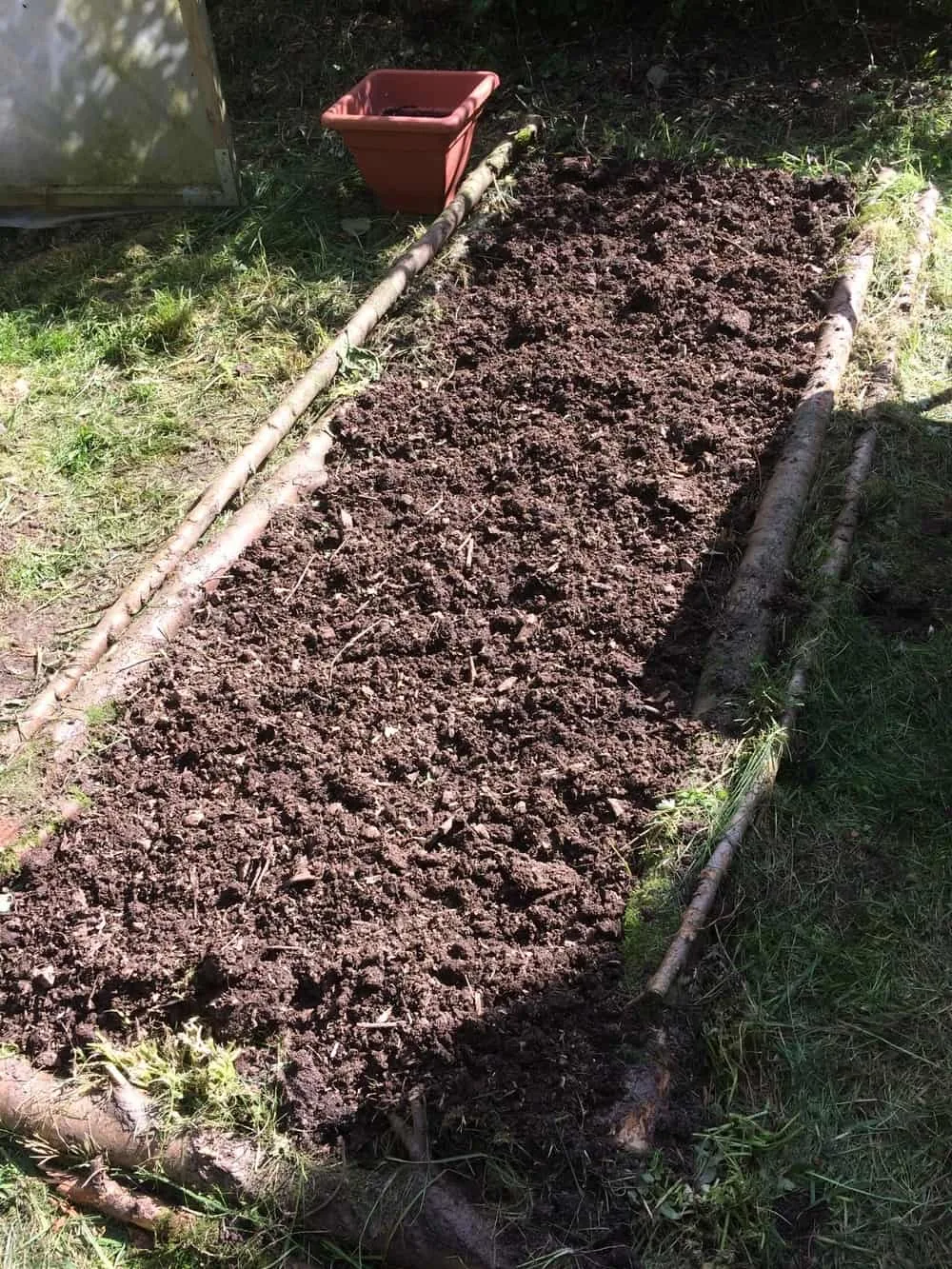
Leaf mold is one of the best mulches or soil conditioners that you can make. It can be used:
- As a mulch to keep down weeds and reduce moisture evaporation from the soil.
- As a soil conditioner, to add fertility to your growing areas.
- For use in a potting mix to grow your plants in containers.
Making a Leaf Mold Bin
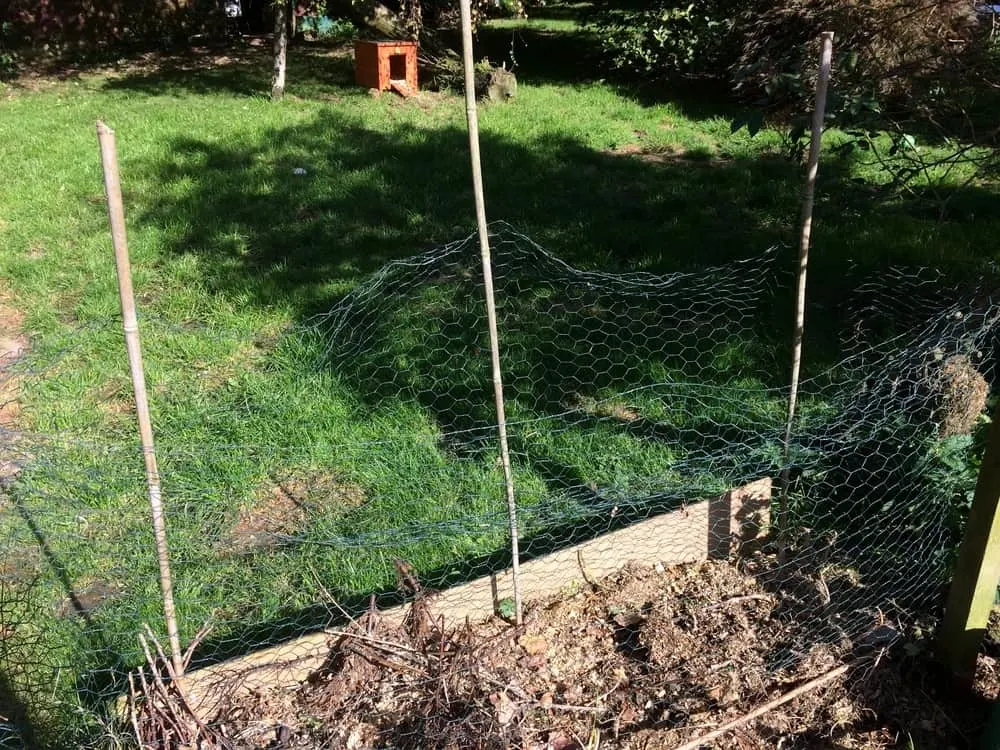
There are a number of different ways to make a bin or containment area for your fallen leaves. You should try to use whatever materials you already have to hand.
In our garden, we have used branches and fencing mesh to build a long and fairly narrow containment bin against an existing fence.
However, you could also create a free-standing bin using mesh and branches or canes, or make a more solid and permanent structure with a wooden framework or fencing stakes.
Try to make sure that you create a structure that is large enough to accommodate all the fallen leaves that you would like to collect from your property.
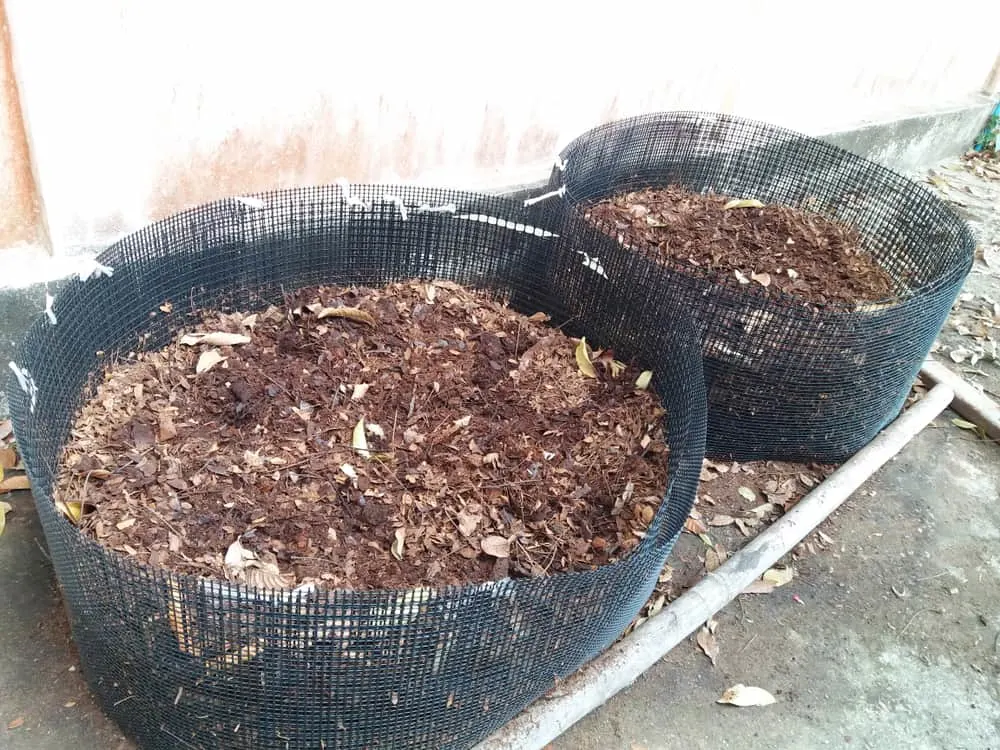
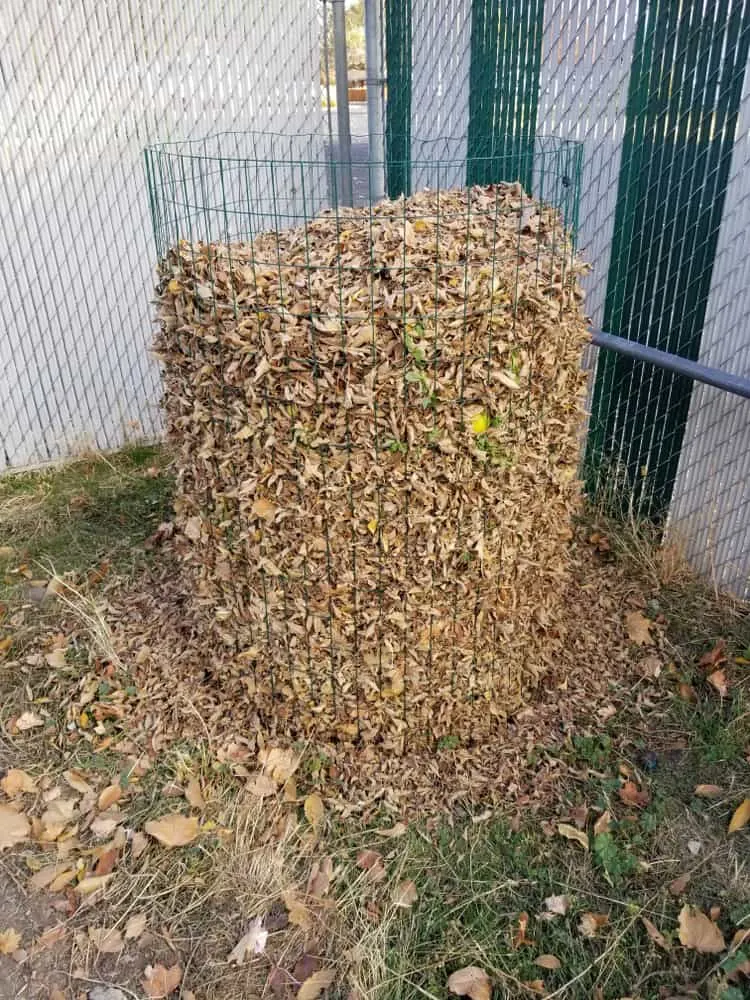
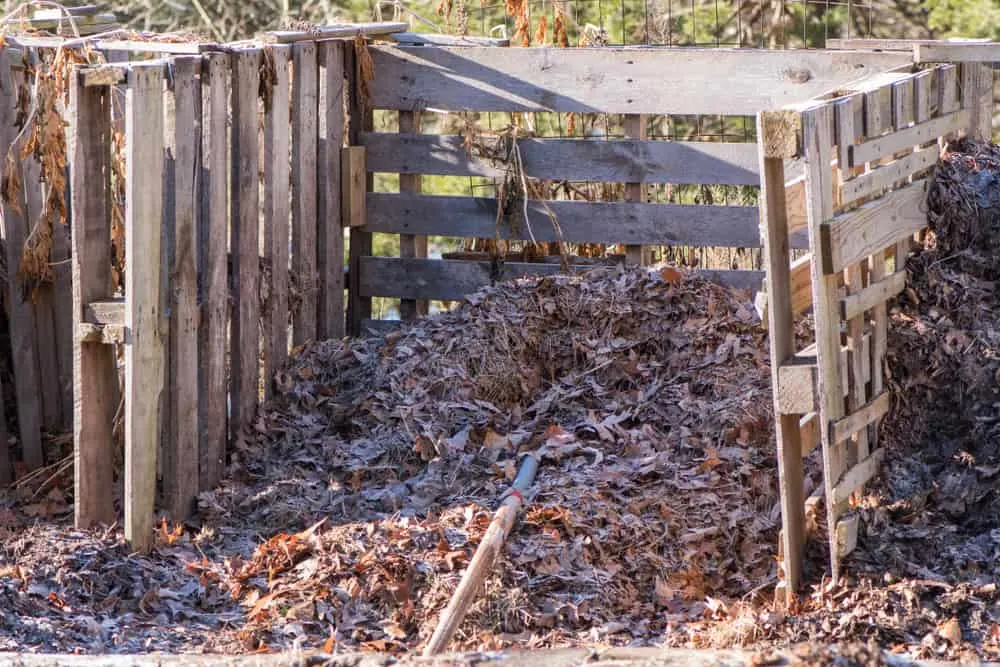
Protecting Your Leaf Bin
It is important, when creating your leaf bin, to allow for plenty of ventilation in the structure so the leaves do not get slimy and air is able to circulate.
It is also best to create some sort of lift-able cover for your leaf pile so it does not become too wet. (We simply cover the bin with a piece of rubber left over from the shed roof over the winter months.)
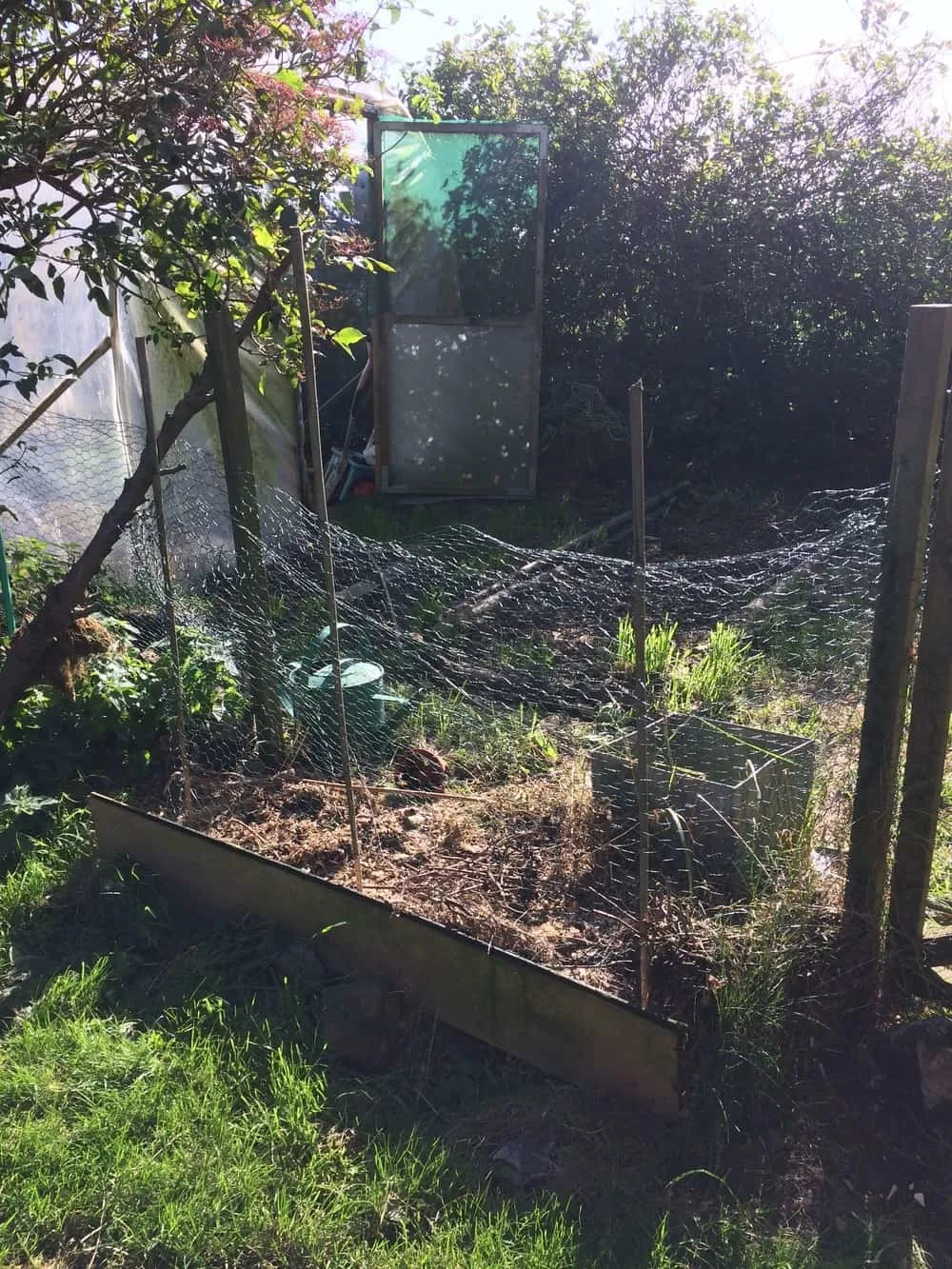
As you can see from the image above, our leaf bin is close to the polytunnel, where much of the product of the bin (both partially decomposed leaves and mulch and leaf mold) are used.
Be sure to think about ease of access and where the leave mold will be used when deciding on where to place one. Of course, it should also be close to the main area where you collect the leaves.
Which Leaves To Use to Make Leaf Mold
It is important to realise that not all leaves were created equal when it comes to making leaf mold.
Though all deciduous trees’ leaves will work fine, some thick leaves such as sycamore and horse chestnut will take far longer to break down. Shredding these thicker leaves can help to speed up the process.
If you want to make the very best quality leaf mold, oak, beech and hormbeam leaves are best of all.
Collecting Fallen Leaves
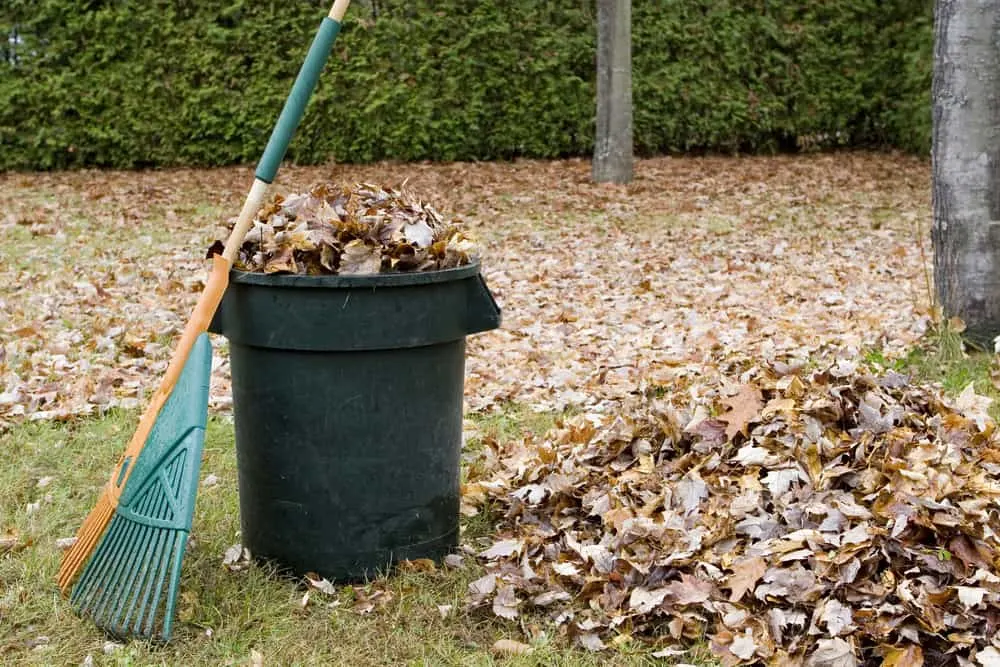
Collecting fallen leaves for leaf mold is a simple process. Using rakes or boards, or a rotary mower, to gather leaves will make life easier.
But you can also relatively easily simply collect up leaves by hand, especially if you only have a smaller garden.
Simply gather up the leaves and place them in a wheelbarrow or other container to take them to your collection point/ holding area.
It is possible to use black garbage bags with holes pricked in them to store your leaves. However, since I am trying to reduce plastic use in my garden wherever possible, for environmental reasons, I prefer to gather my leaves into a mesh bin, where they are contained until they break down into leaf mold.
When collecting fallen leaves, do not worry about getting some grass in with your leaves, this will just make your leaf mold richer in nutrients.
However, you should try to avoid incorporating weeds into your pile as these could become a problem if left unchecked.
Maintaining a Leaf Bin
In very dry weather, it is best to sprinkle your leaves with a little water to make sure that the decomposition can continue. However, for the most part, once you have created a storage facility for your leaves, collected your leaves and placed them within the structure you have created, your hard work is done.
You can now pretty much sit back and let the decomposition take place.
Now, it is just a question of waiting for nature to do its thing. Just keep your eyes open for weeds and pluck out any that take root.
Retrieving Leaf Mold
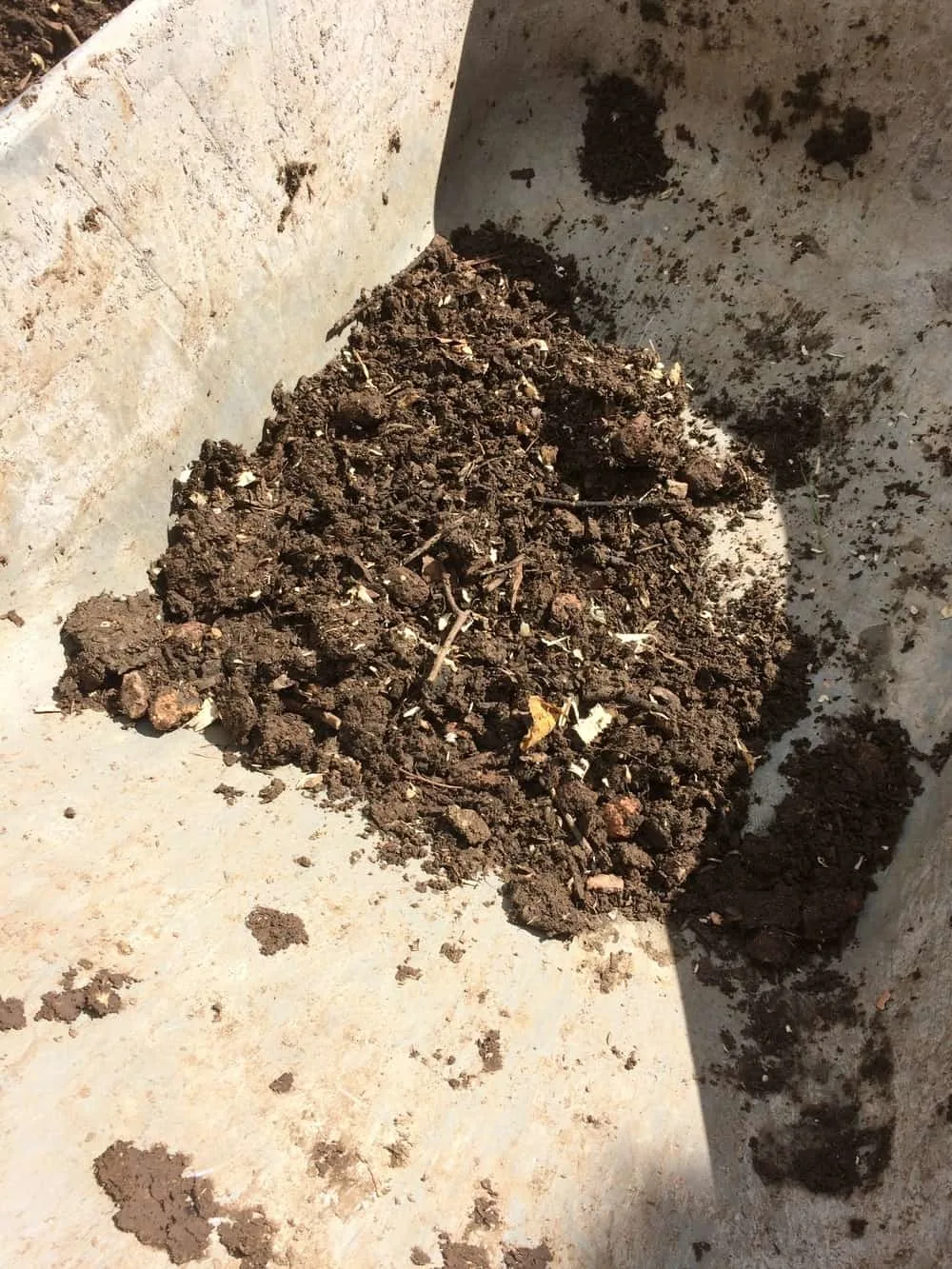
After one year, your leaves will have broken down into a crumbly mulch that can be placed around mature plants in your garden.
Leave them be for another year, however, and your leaves will have completely broken down into a friable soil conditioner that will be perfect for potting up, along with home-made compost, or for adding fertility to your growing areas.
After a year, the leaves that did almost fill our leaf bin will have sunk down and will now fill only around half the structure.
I will then take out some of the mulch material for use around plants in the polytunnel, leaving the rest in place. On the second year, in fall, I will lift the mesh at the base of the bin and dig under the top layer of partially composted leaves (from the previous year) to retrieve the leaf mold from the bottom of the leaf bin.
Adding a second compartment to your leaf bin could make this process easier, as you could add new leaves to the second area while leaving the leaves in the first one to break down for a second year.
Using Leaf Mold
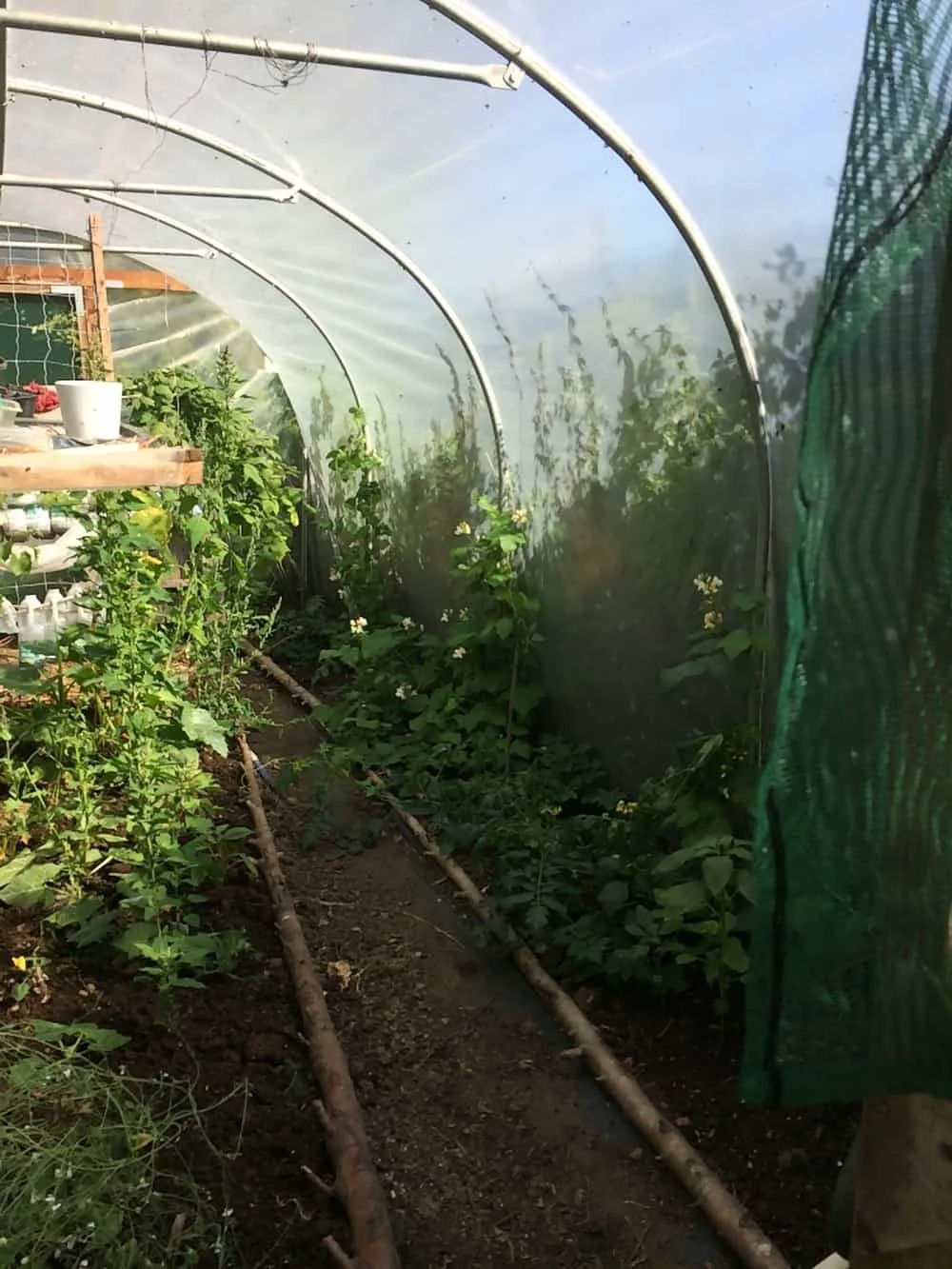
When I retrieve two year old leaf mold from the bottom of the leaf bin in fall, I often use it to add fertility to the polytunnel and vegetable beds after the summer crops have been removed.
It is very important to add fertility to the soil after the summer crops. As we grow food in the polytunnel all year round, the soil could otherwise easily be depleted.
Leaf mold is a valuable material that we can create easily and for free. It is essential to the maintenance of our food production areas, along with the compost we create from kitchen scraps and well-composted chicken manure and bedding.
Make Your Own Leaf Mold
So, the next time you are watching the leaves tumble down in your garden, don’t think of all the work involved in raking them up, and certainly don’t bag them up for disposal.
Instead, see them as the valuable resource that they are. Use them to make leaf mold to improve your garden.
Pin This To Save For Later
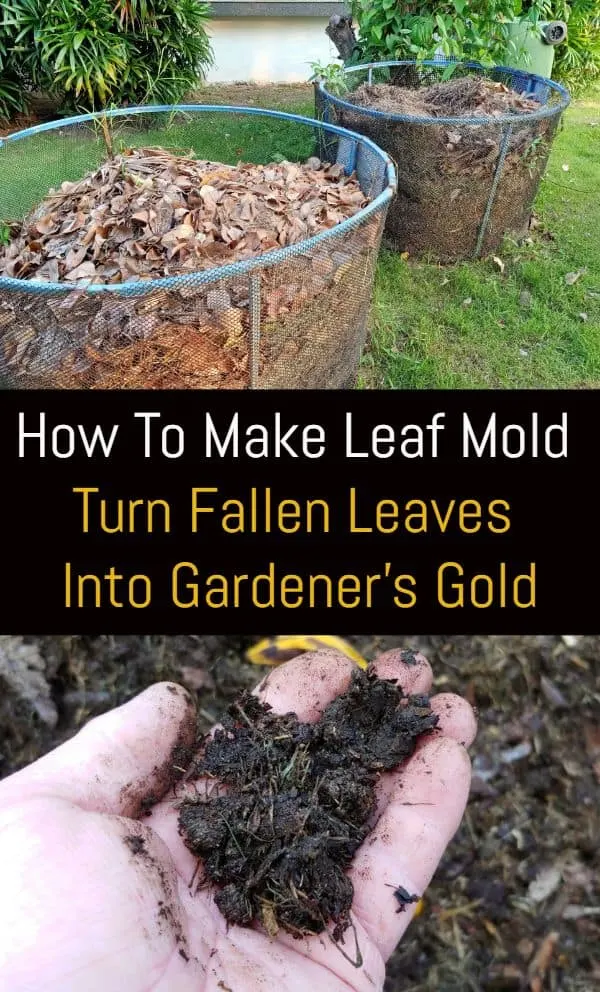

Get the famous Rural Sprout newsletter delivered to your inbox.
Including Sunday musings from our editor, Tracey, as well as “What’s Up Wednesday” our roundup of what’s in season and new article updates and alerts.


